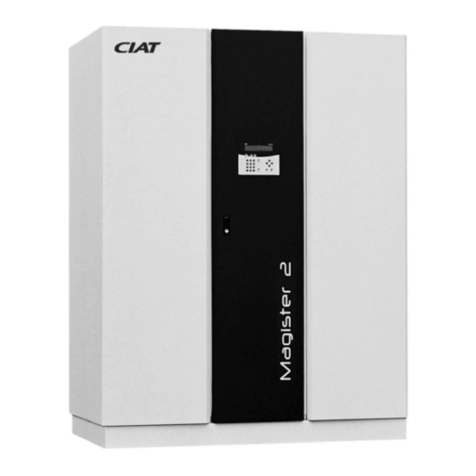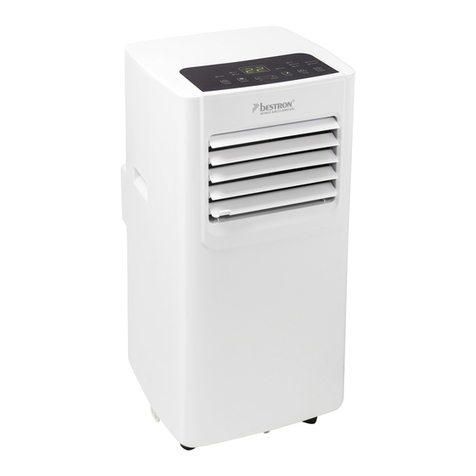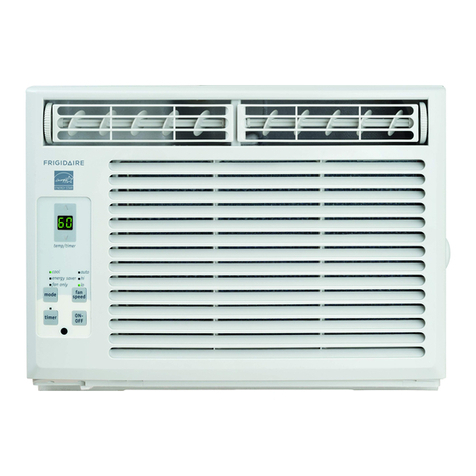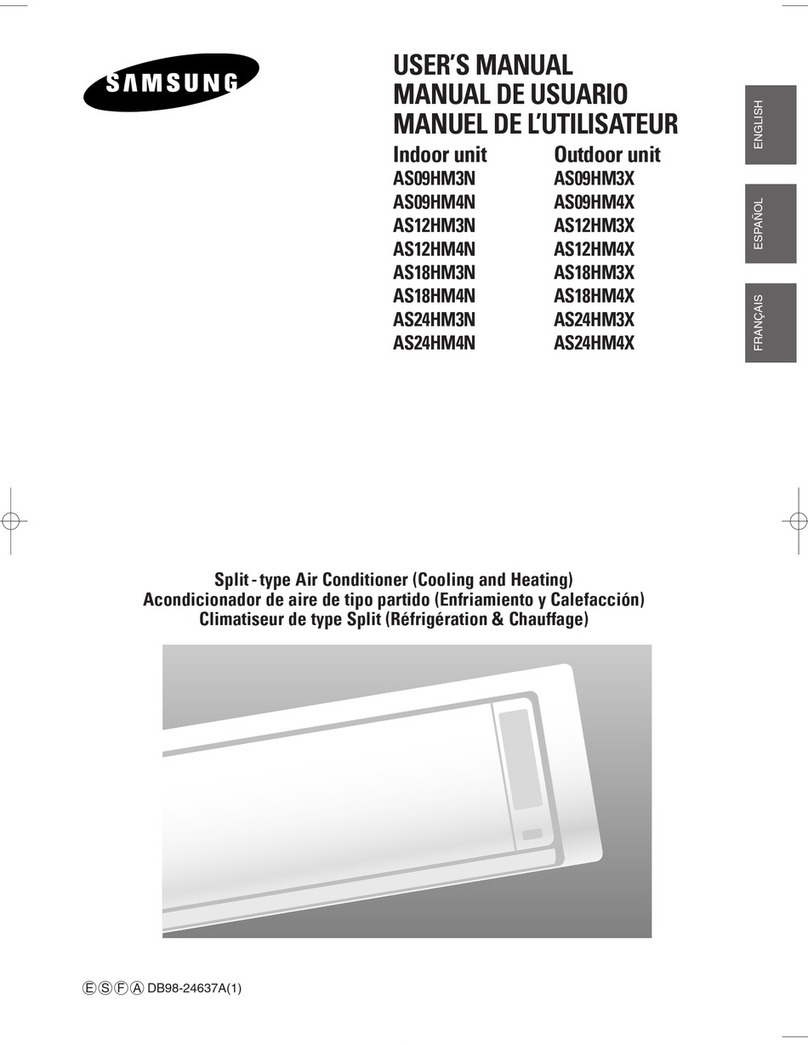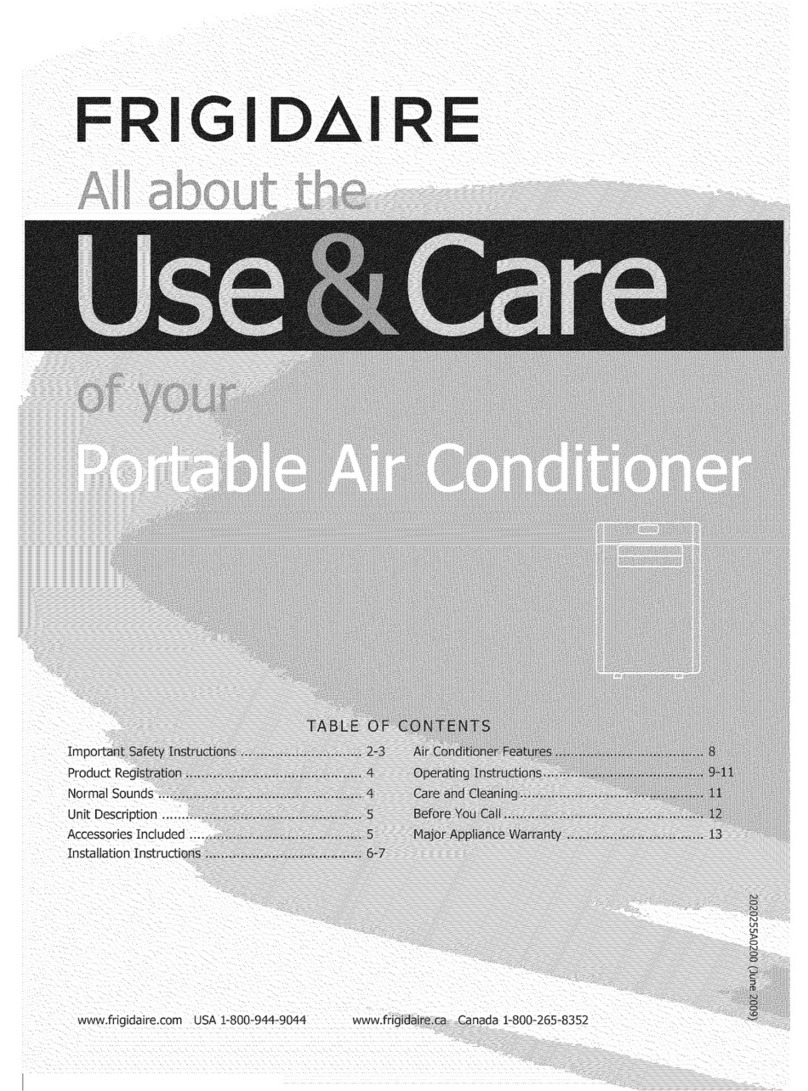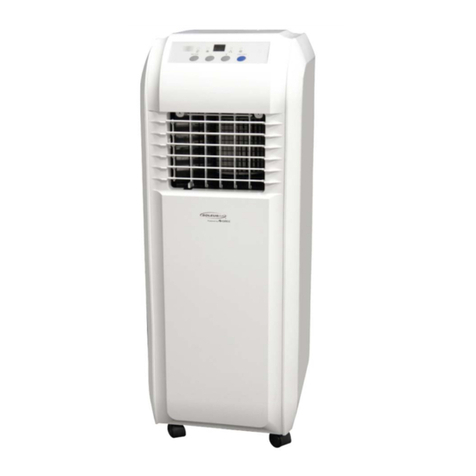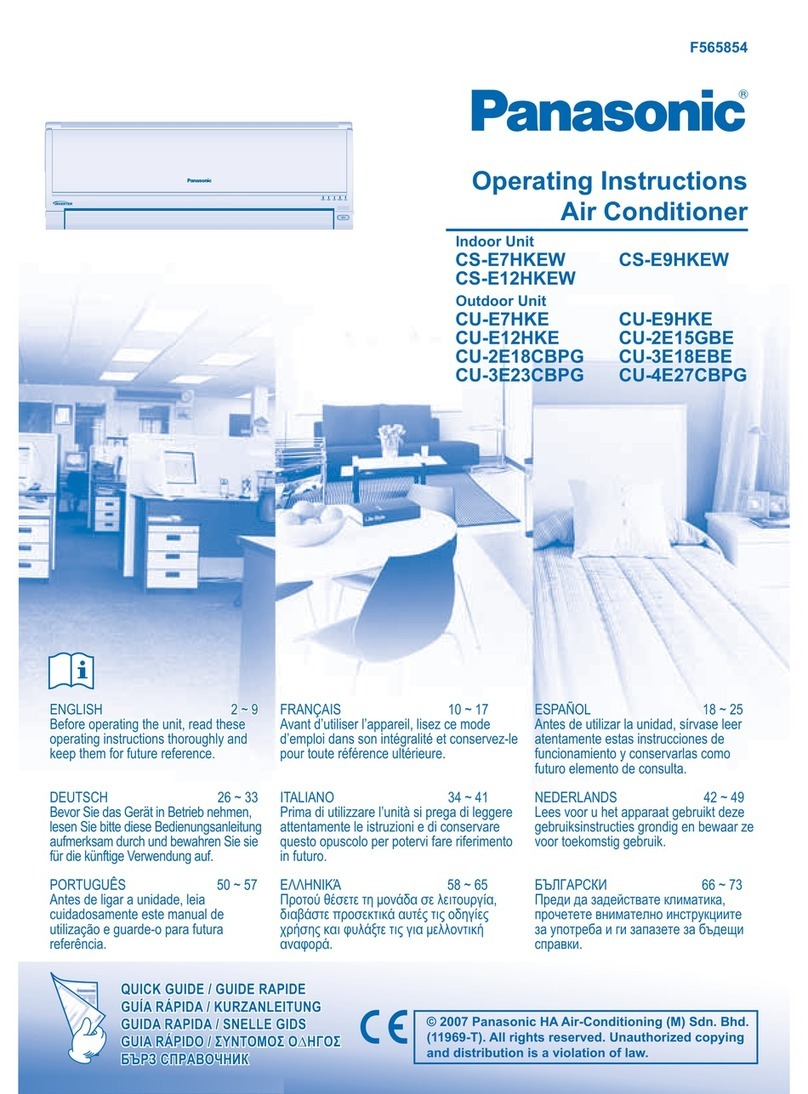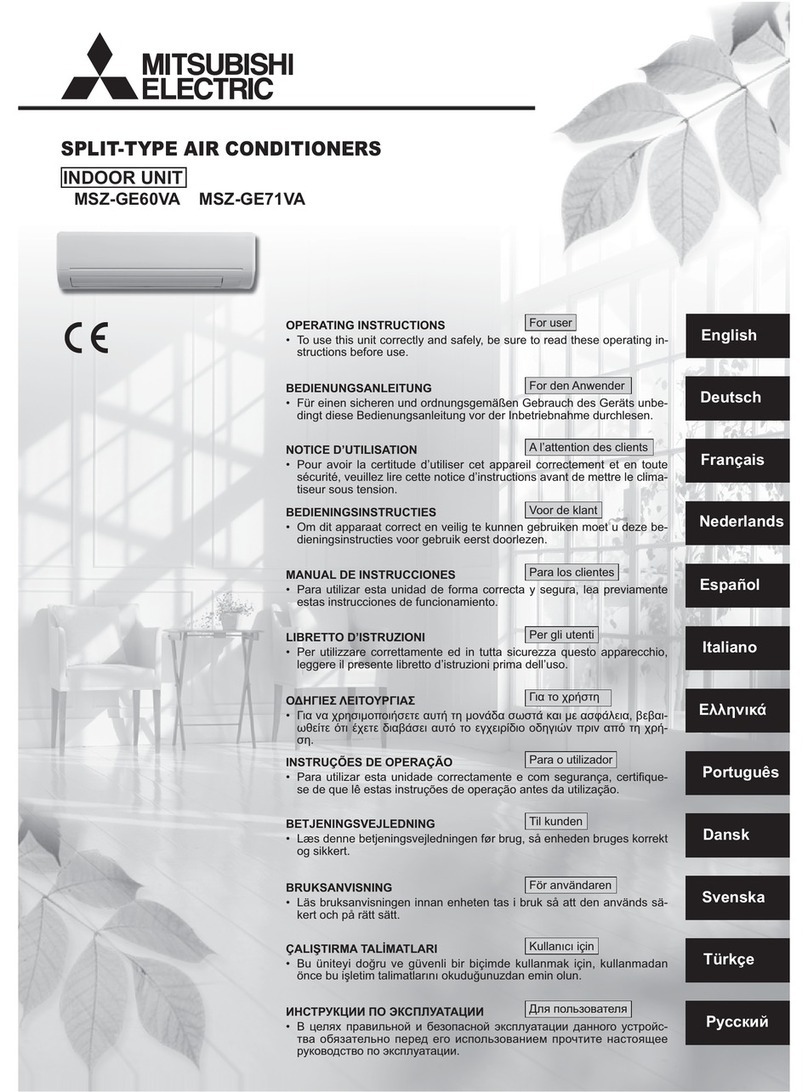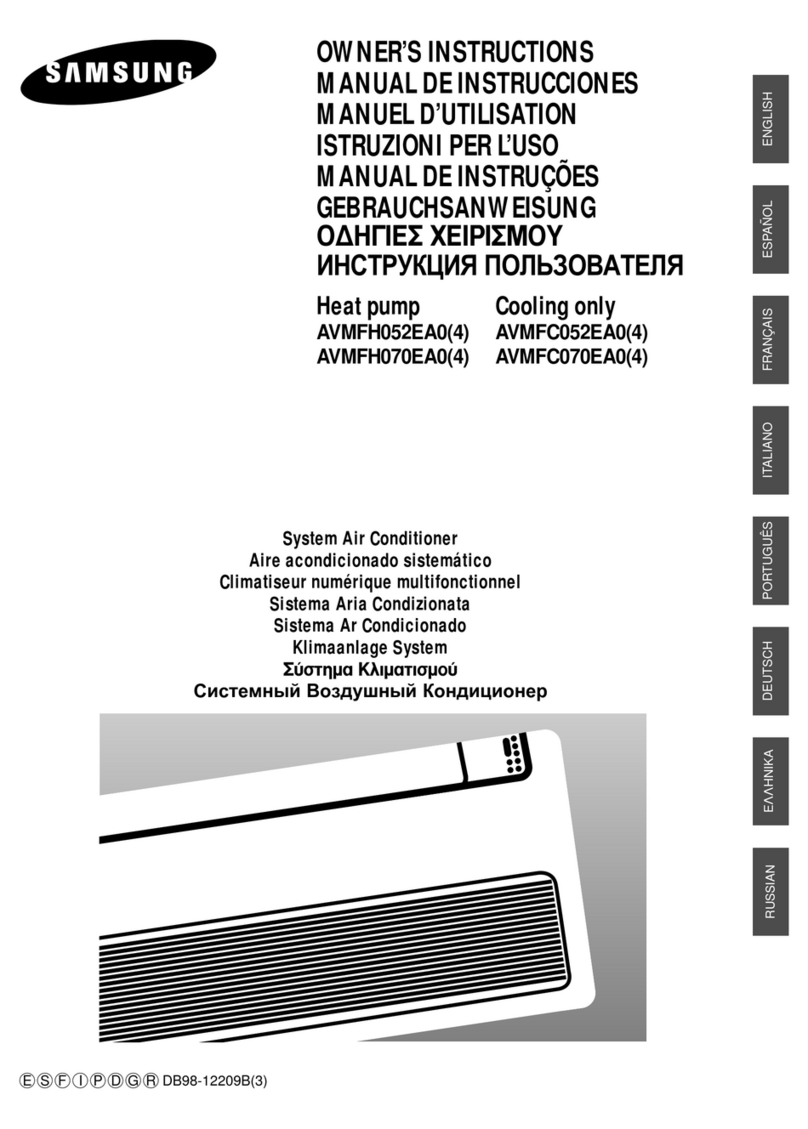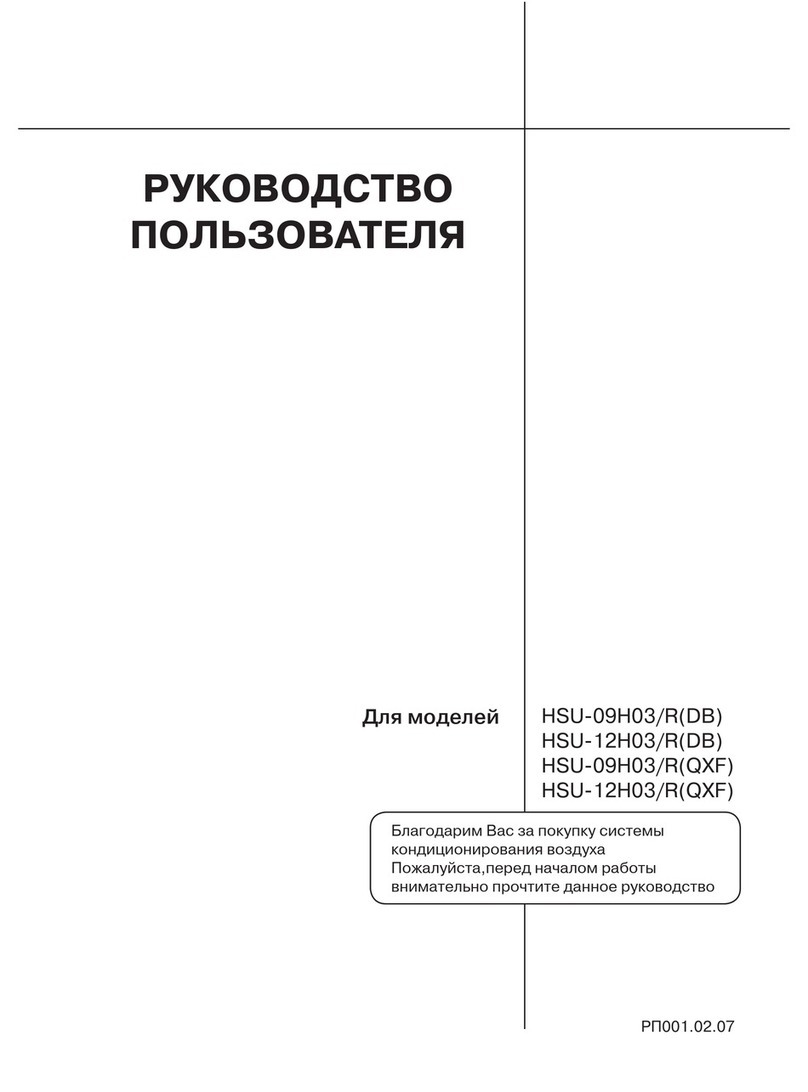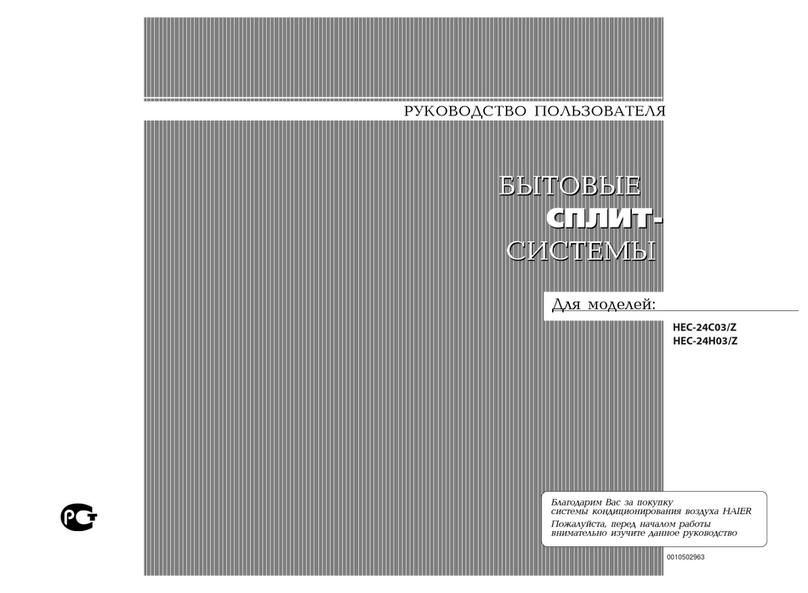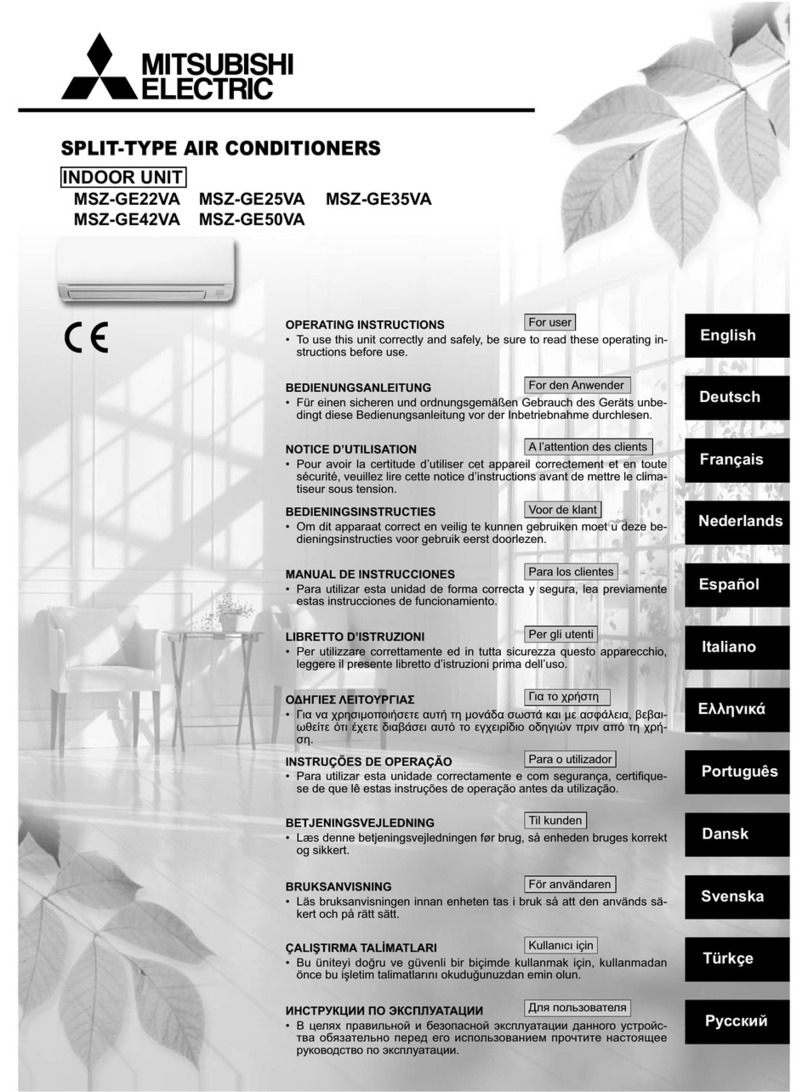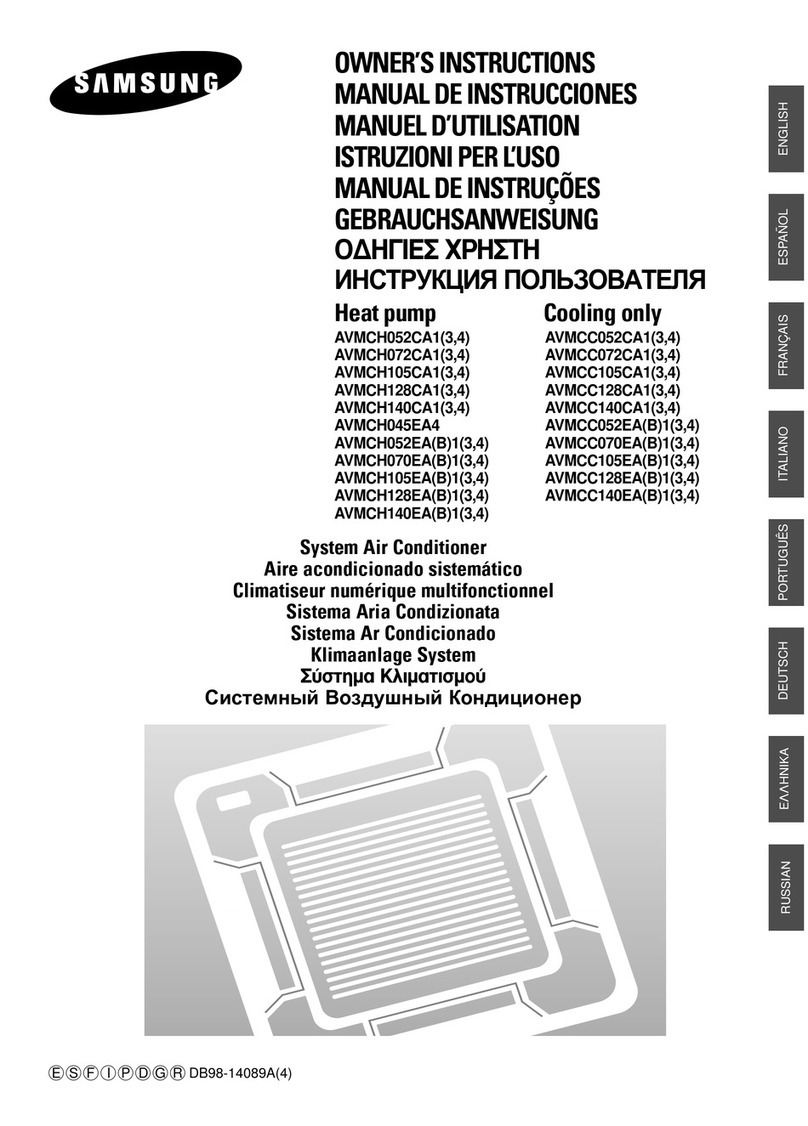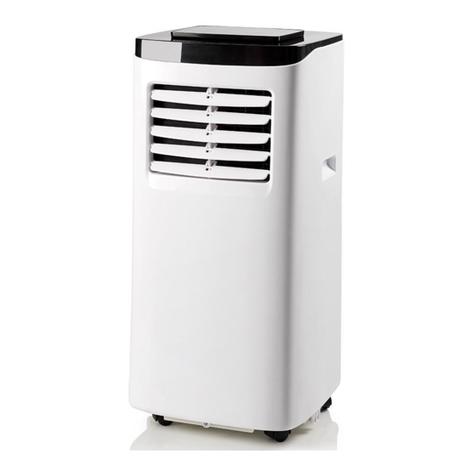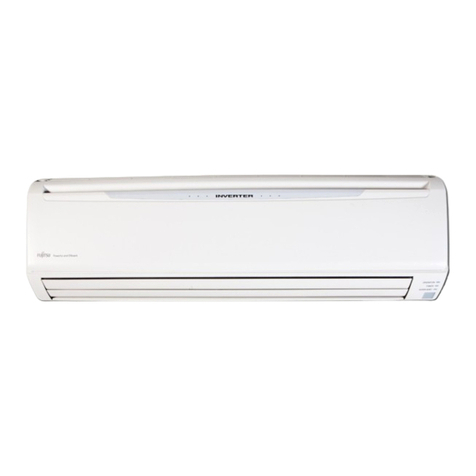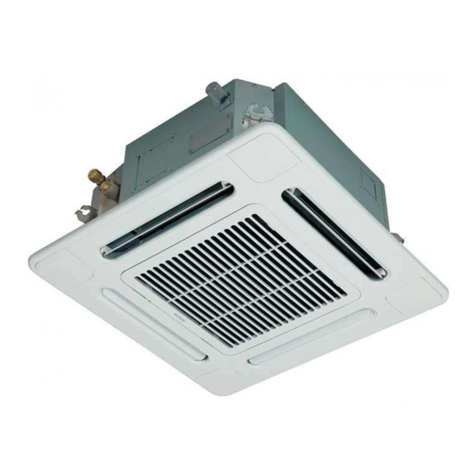
8 9
Important Safety Instructions
• The appliance must be installed, used, and stored in an area that is greater than 13 m.
• R32 is a refrigerant gas that complies with European directives on the environment. Do not puncture
any part of the refrigerant circuit.
• If the appliance is installed, operated, or stored in a non-ventilated area, the room must be designed
to prevent the accumulation of refrigerant leaks as accumulation could result in a higher risk of
ignition.
• The appliance must be stored in such a way as to prevent mechanical failure.
•
issued by an accredited organization that ensures competence in handling refrigerants according to a
• Repairs must be performed based on the recommendations from the manufacturer.
•
• Do not use any means to accelerate the defrosting process or the cleaning process, other than those
recommended by the manufacturer.
•
operating gas appliance) or other potential ignition sources (for example an operating electric heater,
hot surfaces, etc).
•
refrigeration system recognized by this industry. If there is a need for other technicians to maintain
• Be aware that refrigerants may be odorless.
• Compliance with national gas regulations shall be observed.
• Keep ventilation openings clear of obstruction.
• The appliance shall be stored in a well-ventilated area where the room size corresponds to the room
•
industry-accredited assessment authority, which authorizes their competence to handle refrigerants
1. Transport of Equipment Containing Flammable Refrigerants
Check the local transport regulations.
2. Marking of Equipment Using Signs
Check the local regulations.
3. Disposal of Equipment Using Flammable Refrigerants
Check the national regulations.
4. Storage of Equipment
The storage of this equipment should be in accordance with the manufacturer's instructions.
5. Information on Servicing
1) Checks to the area
the risk of ignition is minimized. Comply with the following precautions before working on or
repairing the refrigerating system.
2) Work procedure
or vapor being present while the work is being performed.
3) General work area
All maintenance staff and other people working in the local area shall be instructed on the
workspace shall be sectioned off. Ensure that the conditions within the area have been made
4) Checking for the presence of refrigerants
The area shall be checked with an appropriate refrigerant detector prior to and during work
sparking, adequately sealed, or intrinsically safe.
5) Presence of a re extinguisher
If any hot work is to be conducted on the refrigeration equipment or any associated parts,
6) No ignition sources
No person carrying out work in relation to a refrigeration system which involves exposing any
surrounding space. Prior to work taking place, the area around the equipment is to be surveyed
displayed.
7) Ventilated area
Ensure that the area is an open space or that it is adequately ventilated before breaking into the
system or conducting any hot work. There should be a degree of continuous ventilation while
the work is being carried out. The ventilation should safely disperse any released refrigerant and
preferably expel it externally into the atmosphere.
8) Checks to the refrigeration equipment
be followed. When in doubt, consult Customer Service for assistance. The following checks shall
• The charge size is in accordance with the room size within which the parts containing
refrigerants are installed.
• The ventilation machinery and outlets should operate adequately and should not be
checked for the presence of refrigerants.
• Any marking to the equipment should continue to be visible and legible. Markings and signs
that are illegible shall be corrected.
• Refrigeration pipes or components are installed in a position where they are unlikely to be
exposed to any substance which may corrode refrigerant containing components, unless the
components are constructed of materials which are inherently resistant to being corroded or
are suitably protected against being corroded.
9) Checks to electrical devices
Repair and maintenance to electrical components shall include initial safety checks and
component inspection procedures. If a fault exists that could compromise safety, then no
electrical supply shall be connected to the circuit until it is satisfactorily dealt with. If the
fault cannot be corrected immediately, but it is necessary to continue operation, an adequate
temporary solution shall be used on the advice of an electrician or our customer service team.
This shall be reported to the owner of the equipment, so all parties are advised.
Initial safety checks shall include:
• Ensuring that capacitors are discharged: this shall be done in a safe manner to avoid possible
• Ensuring that no live electrical components and wiring are exposed while charging, recovering,
•
Important Safety Instructions
